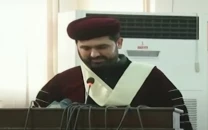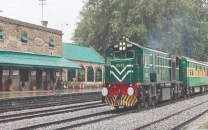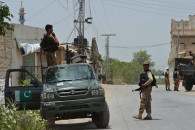The world’s largest election
So universal is the failure of Manmohan Singh and Sonia Gandhi this time that Modi is but the obvious alternative.

The writer is a journalist with Scroll.in in Delhi. He is a Multani from Lucknow, who finds himself trapped in the Republic of South Delhi. He tweets @DilliDurAst
The size results in fragmentation: so many parties, regions and variations. Complexity doesn’t make good copy. In the last general elections in 2009, the Indian media complained it was an issue-less election. 26/11 had happened a few months ago but the dust on that had settled down. LK Advani complained that the Congress wasn’t hanging Afzal Guru to appease Muslim voters, as if Indian Muslims give a damn about Kashmiris. Manmohan Singh was re-elected with better numbers. Credit was given largely to some economic schemes of the 2004-2009 years of Singh, especially a job scheme for the rural unemployed.
In 2004, Atal Bihari Vajpayee’s government was fairly popular and decided to project the nation’s economic growth as the reason why his government should be re-elected. India Shining, they said. That had the opposite effect. The Congress party turned it around and asked: aam aadmi ko kya mila? What did the ordinary Indian get from your economic growth?
In other words, the main issue in both elections was the economic well-being of the average Indian. What is it that my taxi driver, my employer, my vegetable seller, and the Indian farmer worry about the most? Kashmir? Pakistan? America? Nuclear deal? A massacre in Gujarat 14 years ago? The truth is that for most Indian voters, like most voters everywhere, the most important thing is a sense of well-being, the sense of security that they can buy their food and still have some money left to enjoy life, the ambiguous sense that their government is capable of and willing to run the state.
The second term of the Manmohan Singh-led United Progressive Alliance has been more unpopular than any government in recent history. The mood in the Congress party right now is of such melancholy, it seems as if the election results are already out. The bets about the Congress party are whether it will win fewer seats than their worst performance (106 of 543) or more. I bet it will get less than 106 –– its worst performance in history.
With every passing day, the number of people who doubt Narendra Modi will be prime minister (PM) reduces. If Modi is PM, we will all say India has taken a turn for the right. That would be a half-truth. The average Indian voter doesn’t care about right and left. In Delhi, people with right-wing inclinations don’t vote for the Bhartiya Janata Party (BJP) because the BJP leaders in the capital city-state are jokers. What voters vote for is good governance, prosperity, economic well-being and law and order. When they vote along caste or community lines, they do so because the other option discriminates against them on those lines.
Unchecked inflation, low growth, policy paralysis, scam after scam, brazenly defending the indefensible, never saying sorry, using a heavy hand where a soft hello was required, never seeming to do the right thing, doing it when it was too late –– that is what Singh’s second term has been like. In other words, a lot of people who will be voting for Narendra Modi are not people who like to see Muslims butchered. While I won’t be one of Mr Modi’s voters, I see a lot of people who say that Modi is the only option. Such is the desperate need for change; so universal is the failure of Manmohan Singh and Sonia Gandhi this time that Modi is but the obvious alternative. Some may call it the TINA factor –– There Is No Alternative.
A dangerous fascist waiting to be PM makes this election ‘exciting’ enough, but we’ve got more. There’s a new start-up in town and it’s disrupting the game. Nobody knows how many seats the Aam Aadmi Party (AAP) will win –– where, why and how. But the AAP has dominated the discourse so emphatically that the BJP looks like the incumbent and the AAP looks like the opposition. The BJP’s inability to answer the AAP’s questions about its relations with India’s real ruler, Mukesh Ambani, makes it look a lot like the Congress. I can’t wait for the results!
Published in The Express Tribune, March 14th, 2014.
Like Opinion & Editorial on Facebook, follow @ETOpEd on Twitter to receive all updates on all our daily pieces.



















COMMENTS
Comments are moderated and generally will be posted if they are on-topic and not abusive.
For more information, please see our Comments FAQ